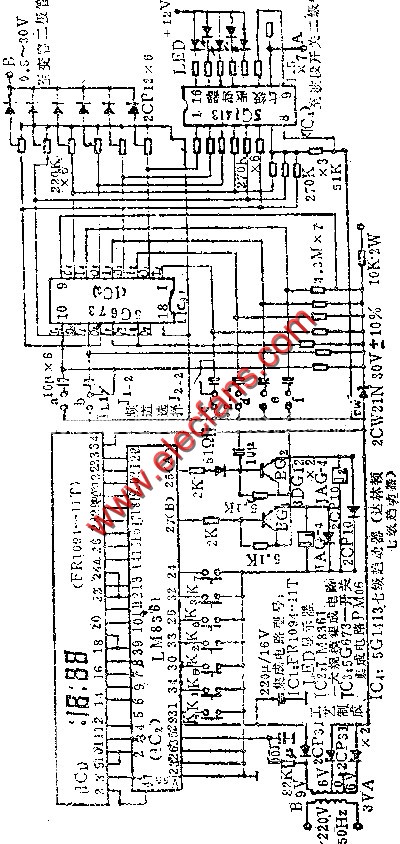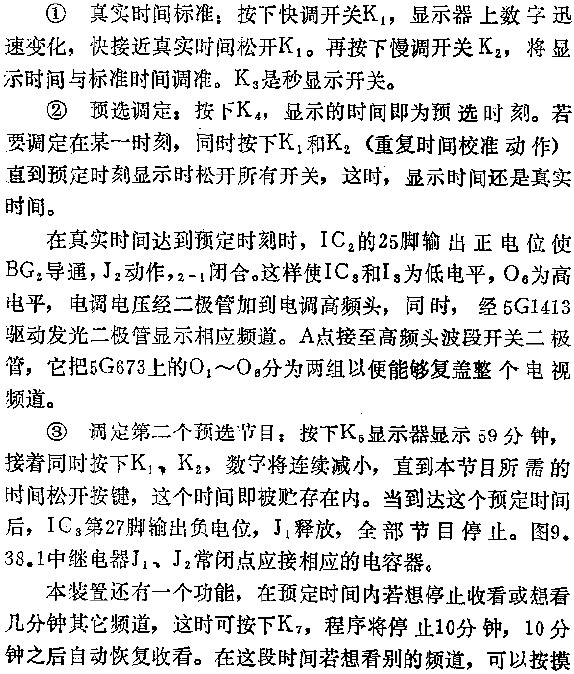The circuit is shown in Figure 9.38.1. It has the function of time display and pre-selection of TV programs , and automatically switches TV channels at a predetermined time. Including the first program to watch first, the device can continuously watch three different channels.
This article refers to the address: http://

Program control section
The clock reference is taken from the mains 50HZ signal and sent to IC2 via the resistor. In the IC2 part, the IHZ signal is driven to drive the second and time-sharing counters, and then connected to the corresponding end of the time display IC1 through the lead wires to display the time.

At either end of A~F, the channel can be connected. Press K8 to eliminate the programmed program.
Aluminum Cable Trays In Data Room
Aluminum Cable Trays In Data Room
In today's digital age, data centers are the backbone of the internet and technology industry. These facilities house the servers, storage devices, and network equipment that make up the infrastructure of the internet. The importance of these facilities cannot be overstated, and as such, they require careful planning and design to ensure their reliability and efficiency. One critical aspect of data center design is the management of cables, which is where aluminum cable trays come into play.
Aluminum cable trays are a popular choice for data centers because they are lightweight, durable, and easy to install. They are also resistant to corrosion, which is a crucial factor in an environment where humidity and moisture can be high. Aluminum cable trays are designed to hold and support cables, providing a neat and organized solution for cable management. They come in various sizes and configurations, making them versatile and adaptable to different data center layouts.
One of the main benefits of using aluminum cable trays in a data center is their ability to improve airflow. When cables are left loose and unmanaged, they can obstruct the flow of air within the data center, leading to hot spots and reduced efficiency. Aluminum cable trays keep cables organized and out of the way, allowing for better airflow and cooling. This, in turn, can help to reduce energy consumption and prolong the life of equipment.
Another advantage of aluminum cable trays is their flexibility. Data centers are constantly evolving, with new equipment and technologies being added or replaced regularly. Aluminum cable trays can be easily modified or expanded to accommodate these changes, without the need for significant downtime or disruption.
In addition to their practical benefits, aluminum cable trays also offer aesthetic advantages. Data centers are often designed to be visually appealing, with sleek and modern interiors. Aluminum cable trays can contribute to this aesthetic by providing a clean and organized look that complements the overall design of the data center.
When choosing aluminum cable trays for a data center, it is essential to consider factors such as cable capacity, load capacity, and fire resistance. Cable trays must be able to support the weight of the cables and any additional equipment, such as switches or routers. They must also be able to withstand high temperatures in the event of a fire, without compromising the safety of the data center.
In conclusion, aluminum cable trays are a vital component of data center design, providing a reliable, efficient, and aesthetically pleasing solution for cable management. Their lightweight, durable, and flexible nature make them an ideal choice for data centers, where reliability and efficiency are of paramount importance. As data centers continue to evolve and grow, aluminum cable trays will remain a critical element in their design and management.
Aluminum Cable Trays for Data center,Aluminum Cable Trays,Aluminum Ladder Tray,Aluminium Cable Ladder
Rayhot Technology Group Co.,Ltd , https://www.cnrayhot.com